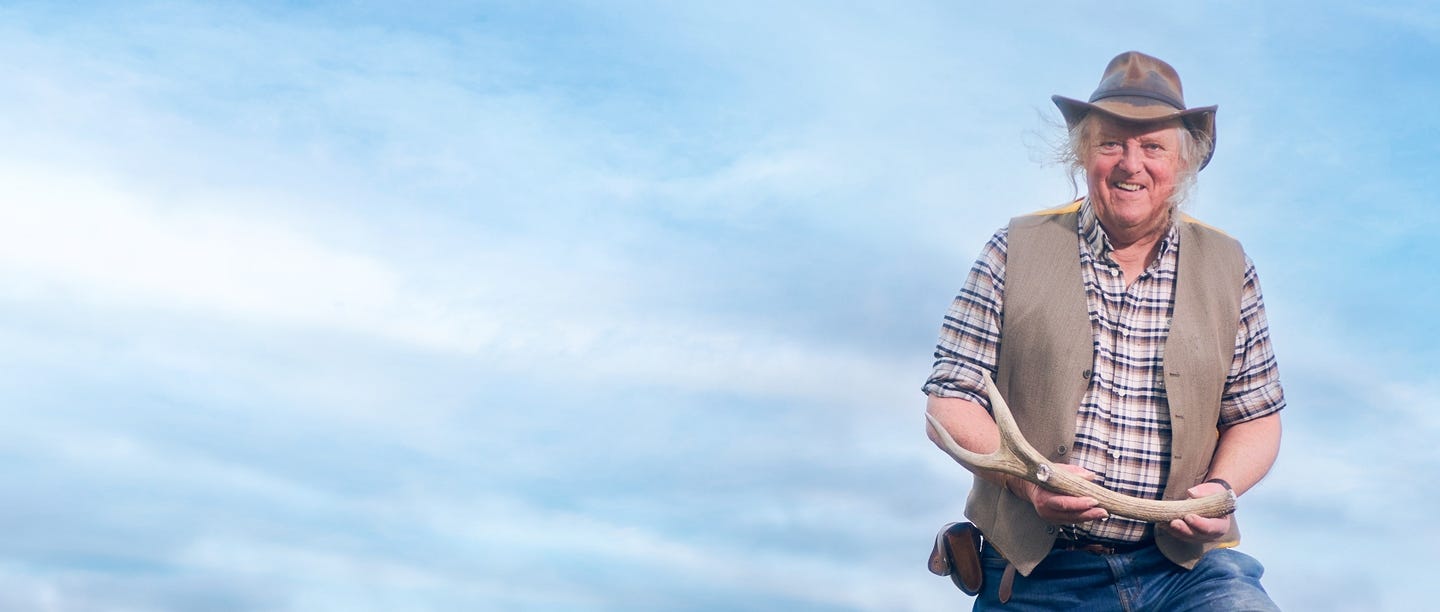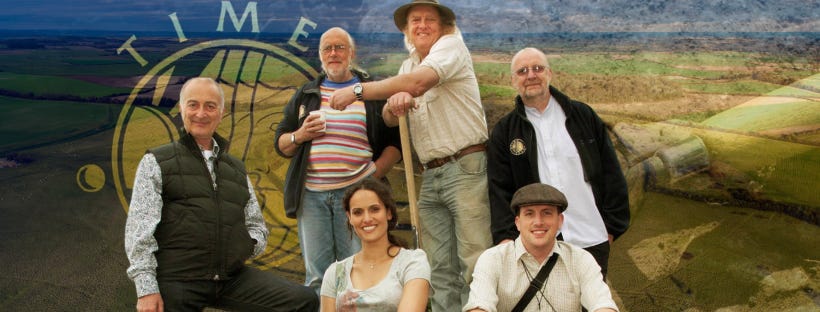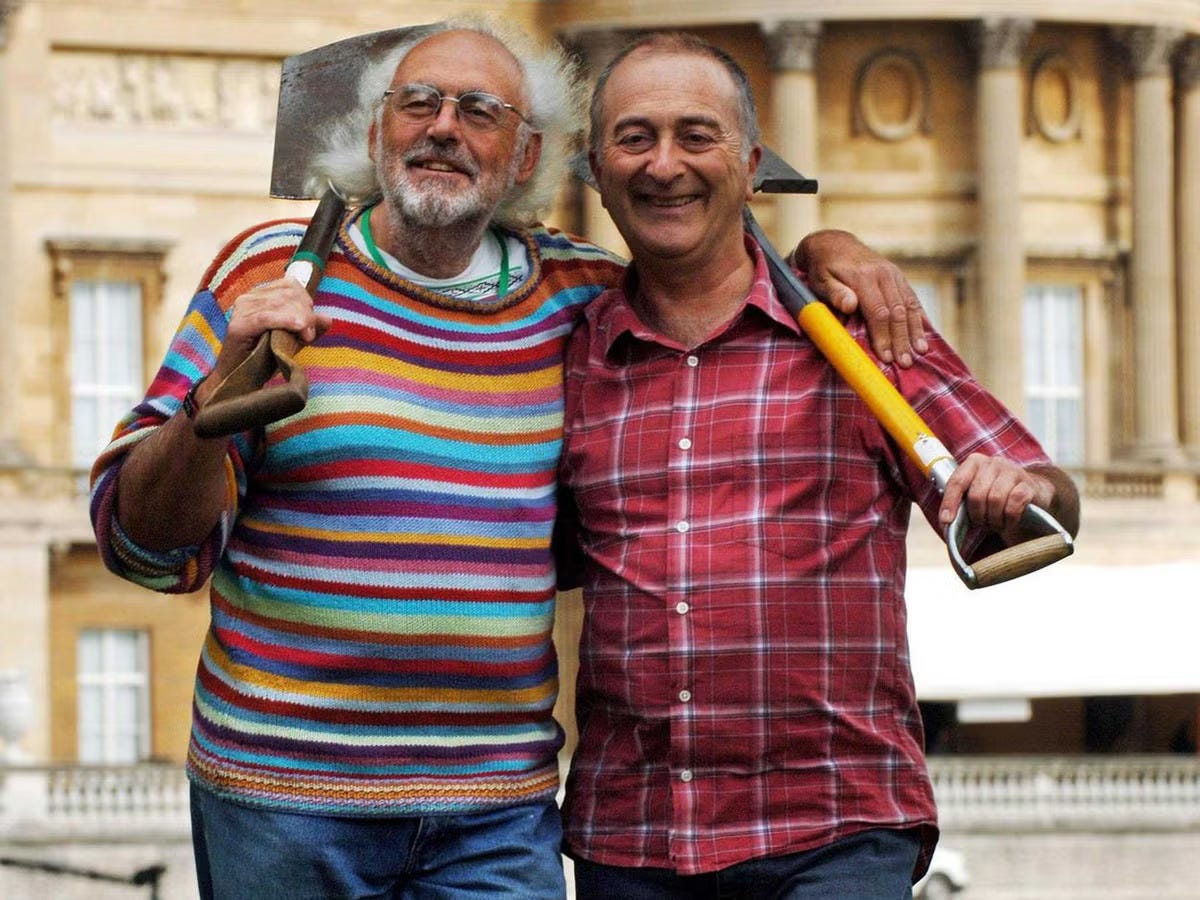From 1994 to 2017, Time Team was the premier archeological TV show, bringing historical excavations out of the confines of academia and presenting it to the masses. It was created by television producer Tim Taylor and presented by actor Tony Robinson - who is known for his success as Baldrick, the dimwitted servant of the suave and conniving Edmund Blackadder (played by Rowan Atkinson) in Ben Elton’s Blackadder - alongside a team of archaeology experts such as Mick Aston, Phil Harding Carenza Lewis, Francis Pryor, Stuart Ainsworth, Helen Geake, Raksha Dave and Alice Roberts. Over the years the team excavated a wide variety of sites dating from the from the Palaeolithic to the Second World War.
The show was usually followed the same format, in which Tony Robinson explains at the beginning of the programme, in an opening "piece to camera", the reasons for the team's visit to the site. During the dig, he would enthusiastically encourage the archaeologists there to explain their theories, discoveries and conclusions, while making sure that everything being discussed is comprehensible to the archaeologically uninitiated. The site they visited would frequently be suggested by a member of the viewing public and the team would attempt to uncover as much as they can of the archaeology and history of the site in just three days.
I have recently been indulging myself in old Time Team episodes recently, via the Time Time and Time Team Classics YouTube channels, the former was relaunched in 2022 by Tim Taylor to help revive the series. This got me thinking about those rainy weekends in the 2000s where I would sit with my dad and watch back-to-back episodes of the show, completely unaware that this was a formative part of my historical journey and my interest in the medieval period. To also see it revived on YouTube and to see the team digging at Sutton Hoo was such an exciting time for me. The nostalgia mixed with the new finds at one of the most significant Anglo-Saxon sites was a combination that filled me with joy. It’s only in my later years that I also realise how wonderful it was to have Phil Harding on TV with his broad West Country accent, it made me feel more comfortable about my albeit softer accent after living in Wiltshire and Bristol in my teen years and early twenties.
Phil also became an archeology hero of mine, alongside fellow West Country native and osteoarchaeologist Alice Roberts. His wit, dry humour and charm were always a highlight of the episode for me, not to mention his wealth of knowledge on seemingly any historical period was inspiring for me. He also worked on the dig that gave us the information for one of the Anglo-Saxon halls currently at Buster Ancient Farm in Hampshire.

You also can’t forget the colourful jumpers of Mick Aston, the team’s specialist in Early Medieval landscape archaeology. He was known for his unfailing commitment and integrity, with his life being dominated by old-fashioned idealism and loyalty, which balanced out the exuberant enthusiasm of Tony and the humour of Phil with a dose of serious archeological knowledge. The three of them all left an impression on the younger version of me, alongside Helen Geake, who is an Anglo-Saxon specialist.
Even though these excavations were entertainment to the viewers, the digs did uncover some incredible objects. Tony Robinson claimed in an interview with Radio Times that “the archaeologists involved with Time Team have published more scientific papers on excavations carried out in the programme than all British university archaeology departments over the same period, and that by 2013, the programme had become the biggest funder of field archaeology in the country.” Some of my favourite finds were the Henry V noble at Candor Castle and the artefacts found in the Anglo-Saxon grave in Prittelwell, Southend-On-Sea, Essex. The candidates for the grave were were originally thought to be either Sæberht of Essex (died 616) or his grandson Sigeberht II of Essex (murdered 653), who are the two East Saxon Kings known to have converted to Christianity during this period and this is based on two gold foil crosses the team found.
Looking back, you don’t always realise what influence some things have on you until you find yourself doing the thing it influenced, in my case it’s talking about history and sharing stories from the past. I’ve also been lucky enough to scrape the surface of maritime archaeology when I worked for the Mary Rose Trust, who are the custodians of King Henry VIII’s favourite ship that sunk in the Solent in 1545 and was recovered in 1982, and I don’t think the job would have appealed to me in the same way if I hadn’t had that early understanding of archaeology.
It’s days like this that I’m thankful for my parents for helping me foster my love of history - even if they didn’t always understand what I was on about. It was the subtle things like afternoons watching Time Team with a cup of tea and getting me books alongside the visits to historical sites and walks in the countryside that are certainly paying dividends now. These early exposures to a whole range of history is something that, upon reflection, I really value and now I get to share my passion with you. While I’ve not been on a dig yet, I’m still engaged in looking at research, reading about history and engaging in every discussion that I can. I hope like Time Team did with me, that I can pass that passion on to the next generation.
I don’t think archaeology would be at the forefront of my generation’s historians minds if it hadn’t been for shows like Time Team and to a similar extent Digging For Britain - which is presented by Time Team alumni Alice Roberts. This ‘history for the layman’ approach is something that I truly admire about this show, as it encourages you to engage your curiosity and do your own research off the back of finishing an episode. I’m so glad I can revisit these digs and the series has been revived for a new generation to fall in love with history lead by the team of Gus Casely-Hayford, Natalie Haynes, Derek Pittman and Helen Geake.
You can support Time Team’s digs by subscribing to their Patreon here.






